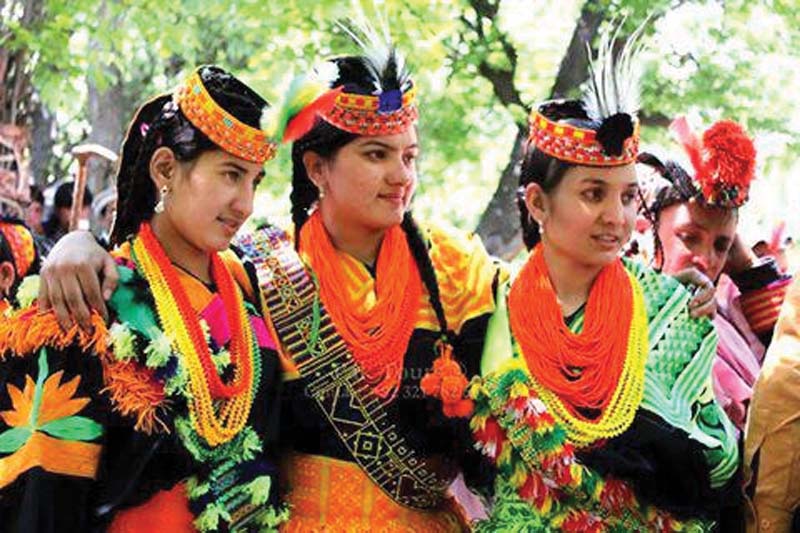
CHITRAL: People of Kalash tribe celebrated the last phase of their religious festival Chomos with their famous rituals, sheeshao (purification day) and goshang with great jubilance and fervour.
Chomos, which is the longest festival of the year, started in September and entered its last stages with sheeshao and goshang being carried on December 16.
'Earthquake was Allah's wrath for Kalash community's immoral ways'
The rituals
Under the mores of sheeshao, all the women of Kalash tribe washed their clothes and dishes. Special thick rotis made with walnut and dough were baked and distributed. At least five rotis for each woman were made. After sheeshao, Kalash residents restricted themselves to Kalash valleys, ceasing all contact.

Male goats are sacrificed for men and female goats are sacrificed for women, after which both genders go into isolation for 40 days separately. Men reside in different community halls and animal farms. During this time, there is an excess of grape wine and meat.
If anyone from the Kalash community does not make it to Kalash for sheeshao, they are not allowed to take part in the remaining festival.
Even if the person manages to gain access to the festival by sacrificing a goat, he or she is not allowed to be part of the rest of the community.
The women of Kalash are a tale of colours, simplicity and struggle
Moreover if any misfortune befalls the Kalash community at this time, the latecomer is held responsible for it. The tribe believes that the latecomer’s desecration of the festival causes ill for everyone.
Bach Anjeek
This year children’s goshang, Bach Anjeek, was celebrated in all three Kalash valleys – Rambor, Bumboret and Bareer. This ceremony marks children’s entrance into Kalash religion. Children are made to wear new traditional Kalash dresses, formally welcoming them into the tribe’s circle. When they change into their new dress, their maternal uncle presents them with a goat.
The father of the children returns the favour by presenting the uncle with a cooking pot.

This year, these customs were celebrated in the famous Jashtkan Community Hall.
Sajji Gor
After goshang, children are presented before their deity –Sajji Gor - and everyone prays for their long life and success.
People of Kalash tribes believe Sajji Gor holds the power to deliver their message to a higher deity, who ultimately fulfills all their wishes. Dozens of goats are sacrificed before Sajji Gor and the meat is distributed among people.
For Peshawar: In honour of the 147 victims of the Army Public School attack
Talking to the media, the tribe’s social activist Saifullah Khan said although people of Kalash celebrate Chomos festival, the usual level of energy and vigour in celebration was absent this year. “Everyone was mourning for the loss of innocent lives in Army Public School attack last year,” he said.
Saifullah added Chomos festival is thousands of years old and has full support of the Muslim community. This is a sole minority festival which is celebrated without any fear.
Another social activist of Kalash, Wazir Zada, said, “Kalash is an ancient religion, preserved solely by the pure-hearted residents of the valleys.” He hoped this year’s festival brings peace and prosperity for everyone everywhere.
Published in The Express Tribune, December 18th, 2015.















































COMMENTS (3)
Comments are moderated and generally will be posted if they are on-topic and not abusive.
For more information, please see our Comments FAQ